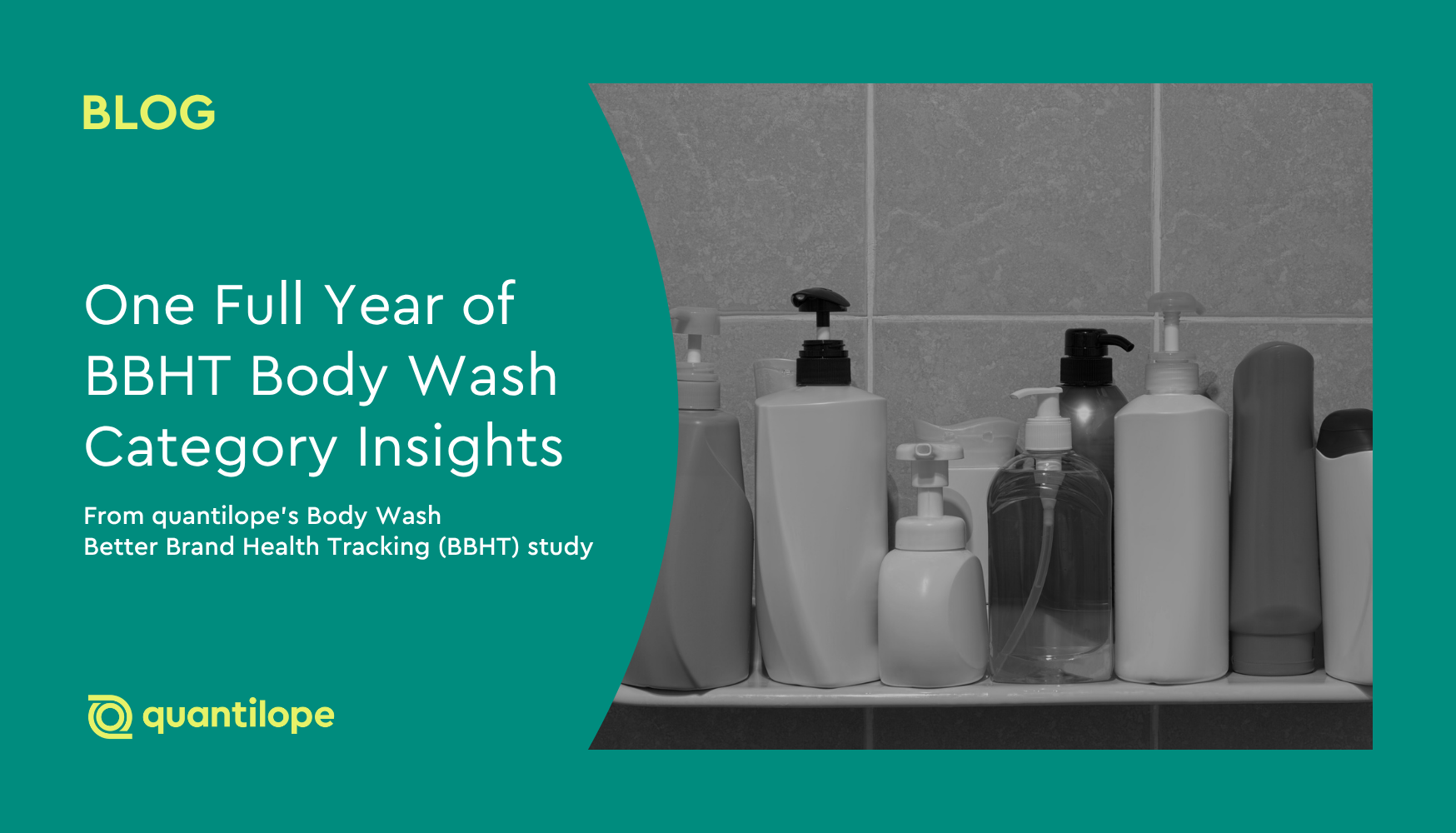In this blog, we will look at how to create a plan for ongoing strategic research into the customer experience as a whole, including customer behavior, customer needs, and customer satisfaction.
Table of Contents:
- What is a consumer insights research strategy?
- Why create a consumer insights research strategy?
- How to create a consumer insights research strategy
- Summary
What is a consumer insights research strategy?
A consumer insights research strategy is a devised plan for research that obtains information from and about your target audience. This information can then be used in a way that improves your product strategy, brand planning, profits, and the relationship you have with your customers. It’s a thought-out approach to research, ensuring all bases are covered in the realm of consumer understanding.
Why create a consumer insights research strategy?
Anyone can conduct consumer research to explore a business objective, as long as they find the right market research provider. There are many sources of data that can be mined for consumer understanding, such as sales patterns, market trends, customer segmentation, consumer attitudes, purchase and usage behavior, consumer needs, and customer satisfaction - or, employee satisfaction, as the attitudes of employees can impact the customer experience as well. A holistic understanding of all these areas will require market intelligence, direct contact with the consumer, and employee-led research.
Creating a data-driven consumer insights research strategy is a sizable undertaking, but hugely advantageous for brands in the long run. Having a pre-designed research strategy gives companies a roadmap to follow, creating an organized and consistent flow of insights into the organization rather than sporadic data findings. A research strategy helps build a complete story around your consumers through planned and well-thought-out executions.
Here are some ways to go about crafting your research strategy:
- Learn about your customers’ concerns
Companies can very easily become out of touch with what customers want, but ongoing and wide-range research will keep insights up-to-date.
We live in a fast-moving consumer marketplace, with demands and preferences changing as new products and services launch. What might have been true of consumer attitudes two years ago may well be very different now. Keeping on top of how consumers are interpreting the competitive landscape, how they use your product or service, what they are satisfied with, and which needs gaps could be filled, puts businesses in a stronger position to deliver what customers really want.
- Improve product development
It might surprise many businesses to learn that customers tolerate weaknesses in the products they buy rather than actively complain about them. Only by speaking to those customers and exploring their user experience do you learn that (for example) they always have to get the scissors out to make their way into your plastic packaging that is meant to rip easily at the corner. Furthermore, if a plastic-free option came along in the same category, they might opt for that even if it meant switching from your brand.
Knowing which product features drive purchases gives businesses an edge - they can feed that knowledge into product improvement and new product ideas, attracting new customers and delighting existing ones. If research is done strategically and regularly, new trends and customer needs won’t be missed.
- Create better marketing campaigns
Researching your brand can lead to a whole new glossary of language that your customers use when talking about your products. This is hugely valuable to understand if your current communications or marketing materials align with the way consumers talk and feel about your product. While you might be tempted to talk about your product as being healthy, your customers might instead talk about how the product contributes to their overall happiness or well-being. Leaning into consumers’ language for new/future marketing campaigns could produce greater appeal and imply that your business understands what consumers want. Similarly, the tone and design of existing marketing campaigns can be fine-tuned to appeal to your target market - perhaps by introducing humor, practicality, reassurance, or all three, into your communications.
Strategic research for marketing campaigns will also tell you which channels are most effective in boosting brand awareness or driving purchases; for example, is social media or direct personal emails the way to go based on the target audience’s preference?
How to create a consumer insights research strategy
Knowing that a consumer insights research strategy will bring value to your business, how do you go about initiating it?
1. Determine who will create your consumer insights research strategy
Every organization needs somebody who is willing to take on a consumer insights research strategy. This person might not necessarily be in charge of every research project but will be the person who maps out the greater insights picture. This might be a company Director, a researcher, or somebody who is customer-facing and has an idea of where to find the answers a business needs. Sometimes, however, brands don’t know how to go about answering those business needs or even where to start. In these cases, leveraging the help of a research partner or consultancy can kickstart the strategic planning process.
Whoever is in charge needs to know which metrics and business goals the research strategy should pertain to so that individual research studies always link back to what is most important to an organization. A net promoter score (NPS) might be particularly important for some businesses, while qualitative customer feedback might form the backbone of research for others. The strategy leader will also need a plan for how to manage and analyze data, as well as how to disseminate findings to key stakeholders.
As time goes on, and depending on the size of your business, it might be the case that multiple people from different teams in your company contribute an element of the strategy. For example, a customer support team has the pulse of customer needs and complaints, while the sales team will pass on data around what sells and who buys.
2. Create a customer journey map
Establishing the different touch points at which your customers come into contact with your business is a good way to determine where research needs to take place and which aspect of the customer experience should be explored. For example, if you’re in the business of insurance, your customers will hear about it through channels like advertising, internet searches, or word of mouth - then again when they sign up, make payment, renew insurance, or make a claim. Their experience at each of these stages will influence their view of your brand. They are all key moments where customer data can be gathered to feed into operations and marketing, maximizing the outcome of your research.
3. Choose a consumer insights platform
The choice of a research partner or platform is crucial. It needs to be one that offers high-quality research by contacting consumers who represent your target market. The research process itself should be smooth and easy to manage, with intuitive survey creation, hassle-free data collection, thorough analysis, and engaging visualizations of data so that findings identify clear action points. It should also be quick, as imminent business decisions rely on timely insights.
Your platform of choice should offer a range of advanced methodologies and analysis tools to get the most out of the data. It should also be able to house all projects in one place for easy reference. Keeping track of customer insights is a key part of an overall insights research strategy. If you’re going to use customer insights most efficiently, you need to monitor what you already know and what you still need to know. One of the best ways to do this is by using a customer insights dashboard, a one-stop shop for all your customer data and knowledge that everyone across your customer insights team can use. A good dashboard tool will house all study insights in one place with interactive charts and live statistical testing.
4. Start collecting insights
With so many types of consumer insights at your fingertips, choose a platform or research partner that can deliver on your needs and start collecting insights. You may have a number of business questions you want answers to: Who are my key customers?, What’s the profile of each customer segment? How can I best reduce customer churn? Which marketing initiatives will result in an uplift in sales? How can I optimize our product offer?... and so on.
Research projects can be conducted simultaneously, or you might choose to take one at a time if you feel each project will feed into the others as iterative research. Whichever you choose to address first, make sure you choose the right methodology to gain meaningful insights into your questions. Once you start collecting insights, you are already one step closer to generating impactful business decisions to drive continued success.
Back to Table of Contents
Summary
A customer insights strategy creates a customer-centric approach to business, leveraging the real experiences of your customers to improve your product and sales. It feeds into your marketing strategy, giving you confidence that your communication style is based on reliable data, and helps ensure customer retention while attracting new customers to your offer.
quantilope’s Insights Automation Platform provides businesses with a quick, reliable source to gather customer experiences from respondents. Its range of 13 AI-driven advanced methodologies caters to a multitude of business needs, such as portfolio management, new product development, and communication testing. As well as quantitative solutions, quantilope also offers a qualitative research tool, inColor, which allows respondents to receive and answer questions in video format. inColor brings a deeper level of understanding to the emotions and motivations behind customer decisions, not only through consumers’ own voices, but also through a number of AI-driven analyses: sentiment, emotion, and keyword.
All data collected through quantilope’s platform can be analyzed in real-time, with reports updated automatically so that users can get an idea of customer feedback from an early stage. The platform also prioritizes speed; surveys are easy to create using quantilope’s instinctive survey builder with drag & drop functionality or by using a series of templates, with findings available in a matter of days.
To learn more about how to craft a consumer insights research strategy for your business, get in touch below:




